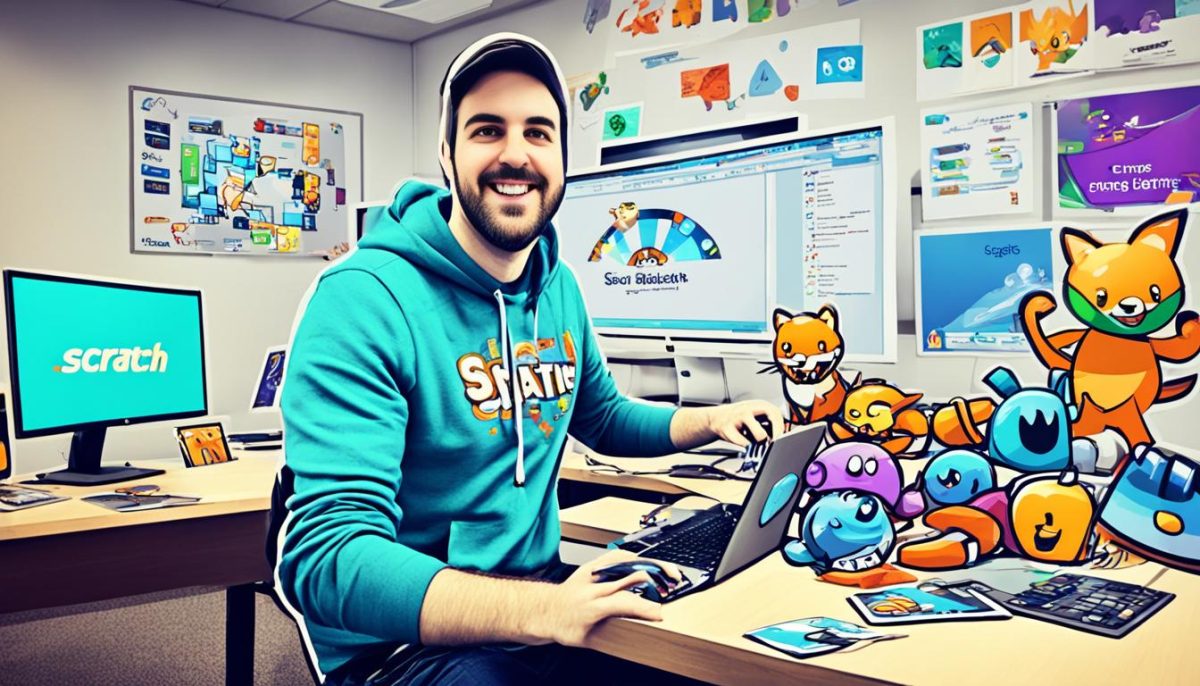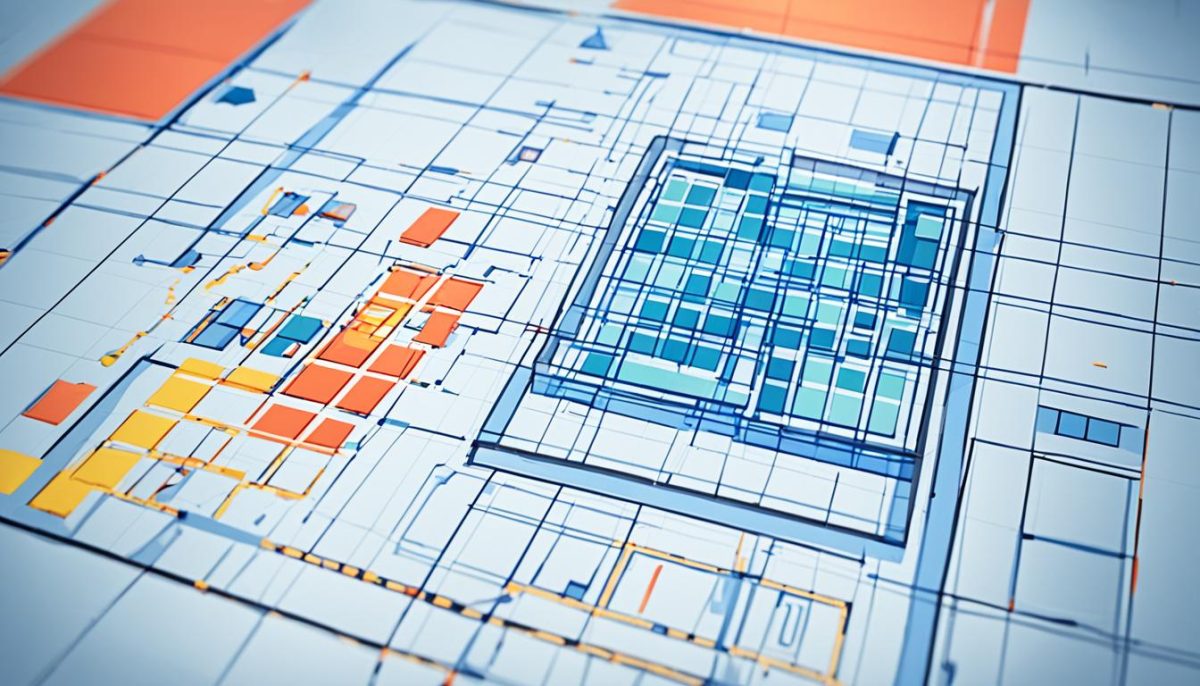Welcome to our step-by-step guide on how to make online games using Scratch! Whether you’re new to game development or have some experience, we’re here to walk you through the essentials of creating your own online games using the Scratch platform. With Scratch, you can unleash your creativity and bring your game ideas to life.
Scratch is a beginner-friendly programming language developed by the MIT Media Lab. It provides a visual interface that allows you to create interactive stories, animations, and games without any prior coding experience. Scratch is widely used by educators and enthusiasts around the world to introduce programming concepts in a fun and engaging way.
In this guide, we’ll cover everything you need to know to get started with Scratch and develop captivating online games. From designing game mechanics to publishing and sharing your game, we’ve got you covered. So, let’s dive in and explore the wonderful world of online game development on Scratch.
Whether you want to make online games for personal enjoyment, educational purposes, or even commercial ventures, Scratch provides a user-friendly platform that empowers you to turn your ideas into reality. Let’s embark on this exciting journey together and create amazing online games on Scratch!
Getting Started with Scratch
Welcome to the exciting world of Scratch! If you’re new to coding and game development, Scratch is the perfect platform for you to unleash your creativity and bring your ideas to life. In this beginner’s guide to Scratch, we’ll walk you through the basics and get you started on your game development journey.
Scratch is a visual programming language that allows you to create interactive stories, animations, and games. It was designed with beginners in mind, making it easy to learn and use. With Scratch, you don’t need to worry about complex coding syntax – instead, you’ll use blocks to drag and drop commands and create your game logic.

Before we dive into the specifics of Scratch, let’s briefly introduce you to its interface. When you open Scratch, you’ll be greeted with a stage where your game will come to life. On the left side, you’ll find a palette of blocks that you can drag and stack together to create your scripts. In the center, you’ll have your sprite, which can be a character, object, or background for your game. And on the right side, you’ll have different tabs to access various features and resources.
Now that you’re familiar with the interface, let’s explore some key features of Scratch:
- Sprite Library: Scratch provides a wide range of pre-made characters and objects that you can use in your game. You can also import your own custom sprites to give your game a personal touch.
- Scripting Blocks: The heart of Scratch lies in its blocks. Each block represents a command or action that your sprite will perform. By combining these blocks, you can create complex and engaging game mechanics.
- Costumes and Backdrops: Scratch allows you to change the appearance of your sprite by adding multiple costumes. You can also set different backdrops to create dynamic and immersive game environments.
- Events and Triggers: With Scratch, you can program your game to respond to different events and triggers. Whether it’s a key press, mouse click, or collision with another sprite, you have full control over how your game behaves.
Now that you have a basic understanding of Scratch and its features, it’s time to start creating your first game! In the next section, we’ll guide you through the process of designing your game and bringing your ideas to life. Get ready to unleash your creativity and have fun!
Designing Your Game
When it comes to creating online games on Scratch, a solid design is key to capturing players’ attention and making your game enjoyable to play. In this section, we’ll explore the essential elements of game design and how to incorporate them into your projects.
Planning Your Game
Game design starts with a clear plan. Before diving into coding, take the time to brainstorm and outline your game idea. Consider the genre, storyline, and objectives of your game. This initial planning phase will serve as a roadmap, guiding you throughout the development process.
Engaging Game Mechanics
Game mechanics are the rules and systems that drive interaction and gameplay. Introduce mechanics that make your game engaging and addictive. Whether it’s a challenging puzzle or an exciting race, well-designed mechanics keep players hooked and coming back for more.
Incorporating Game Elements
Game elements such as characters, levels, and challenges add depth and variety to your game. Create unique characters with distinct abilities, design multiple levels with escalating difficulty, and incorporate challenging obstacles and puzzles. These elements will make your game more immersive and keep players engaged for longer periods.
“Design is not just what it looks like and feels like. Design is how it works.” – Steve Jobs
Unleash Your Creativity with Scratch
With Scratch’s intuitive visual programming language, you have the flexibility to bring your game ideas to life. From designing characters to creating interactive environments, Scratch provides a range of tools and features that empower your creativity. Experiment with different design elements, test your ideas, and let your imagination flow freely.
Let’s take a look at a table that summarizes the key aspects of game design, online game mechanics, and game elements:
| Aspect | Description |
|---|---|
| Game Design | Plan, outline, and structure your game idea |
| Online Game Mechanics | Create rules and systems for engaging gameplay |
| Game Elements | Incorporate characters, levels, and challenges |
Remember, a well-designed game captivates players and keeps them immersed in the experience. By carefully considering game design principles, crafting engaging mechanics, and incorporating exciting elements, you can create online games that entertain and delight players. Now, let’s move on to the next section and learn how to publish and share your game.

Publishing and Sharing Your Game
Once you’ve created your online game on Scratch, it’s time to share it with the world. In this section, we’ll guide you through the process of publishing and sharing your game online. We’ll explore different platforms where you can showcase your game, discuss the importance of playtesting and getting feedback, and provide tips on how to promote your game to reach a wider audience.
Choosing the Right Platform
When it comes to sharing your Scratch games, it’s important to choose the right platform that suits your needs. There are various online platforms available that allow you to publish and share your games with the community. Some popular options include:
- Scratch Website: The official Scratch website is a great place to start. You can create a project page, add relevant tags, and share your game with the Scratch community.
- Social Media: Don’t underestimate the power of social media. Platforms like Facebook, Twitter, and Instagram can help you reach a broader audience and attract more players to your game.
- Gaming Portals: There are dedicated gaming portals where you can publish your Scratch games and connect with gamers who are interested in trying out new games.
Playtesting and Gathering Feedback
Before you release your game to the public, it’s essential to playtest it and gather feedback from others. Share your game with friends, family, or fellow game developers to get their insights and suggestions for improvement. Consider organizing focus groups or seeking feedback from online communities to gain a diverse range of perspectives.
“Playtesting is crucial for identifying any bugs or issues in your game mechanics and gameplay experience. It also helps you understand how players interact with your game, giving you valuable insights for further refinement.” – Game Developer, Emma Carter.
Promoting Your Game
Promotion plays a vital role in getting your game noticed by a wider audience. Here are some effective strategies for promoting your Scratch game:
- Create a captivating trailer or gameplay video showcasing the highlights of your game. Share it on video-sharing platforms like YouTube.
- Engage with the Scratch community by participating in forums, sharing updates about your game, and providing constructive feedback on other projects.
- Reach out to gaming bloggers, influencers, and journalists who may be interested in reviewing or featuring your game.
- Utilize social media channels to create buzz around your game. Share screenshots, development updates, and behind-the-scenes glimpses to generate excitement.
Remember, the more exposure your game receives, the higher the chances of attracting a larger player base.
| Platform | Benefits |
|---|---|
| Scratch Website | – Reach a large community of Scratch users – Easily share your game and receive feedback – Discover and collaborate with other creators |
| Social Media | – Tap into a wider audience beyond the Scratch community – Generate buzz and excitement for your game with engaging posts – Connect with influencers and potential players |
| Gaming Portals | – Showcase your game to gamers specifically looking for new experiences – Increase visibility and reach beyond the Scratch ecosystem – Connect and network with other game developers |
Enhancing Your Game with Advanced Techniques
Now that you have a solid foundation in online game development with Scratch, it’s time to take your games to the next level by incorporating advanced techniques and coding tricks. These enhancements will make your games more visually appealing, interactive, and engaging for players. Let’s explore some of the ways you can enhance your game:
1. Adding Sound Effects and Background Music
Bring your game to life by adding sound effects and background music. Sound effects can be used to enhance actions and events in your game, while background music sets the mood and adds to the overall gaming experience. With Scratch, you can easily incorporate audio files and customize when and how they play.
2. Implementing Advanced Animations
Take your game graphics to the next level with advanced animations. Scratch allows you to create complex animation sequences, transitions, and effects that will captivate your players. By using coding tricks such as loops and variables, you can create dynamic and interactive animations that bring your characters and game elements to life.
3. Exploring Advanced Game Mechanics
With Scratch, you can go beyond the basic gameplay mechanics and introduce more complex and challenging elements to your game. Experiment with features such as level progression, power-ups, puzzles, and multiplayer interactions. These advanced game mechanics will keep players hooked and motivated to keep playing.
4. Incorporating User Input and Interactivity
Make your game more immersive by allowing players to interact with it. Enable user input through keyboard controls, mouse clicks, or touch gestures. You can also incorporate features such as high scores, achievements, and leaderboards to encourage competition and engagement among players.
By utilizing these advanced techniques and coding tricks, you’ll be able to create games that stand out from the crowd and provide an exceptional gaming experience. With practice and experimentation, you’ll continue to develop your skills and uncover new possibilities for your projects.
Now, let’s move on to the final section of this guide, where we’ll share some valuable tips and best practices for online game development on Scratch.
Tips and Best Practices for Online Game Development
Congratulations on making it to the final section of our guide! Now that you’ve learned the basics of online game development on Scratch, it’s time to take your skills to the next level with some valuable tips and best practices. By implementing these strategies, you can create high-quality online games that players will love.
Firstly, optimizing game performance is crucial for a seamless gaming experience. Keep your code clean and efficient by avoiding unnecessary calculations and loops. Optimize your graphics and animations to ensure smooth gameplay even on lower-end devices. By prioritizing performance, you’ll attract more players and keep them engaged.
In addition to performance, designing user-friendly interfaces is essential. Consider the target audience when creating menus, buttons, and navigation elements. Make sure everything is intuitive, easy to understand, and visually appealing. A well-designed interface enhances the overall user experience and keeps players immersed in your game.
Lastly, never underestimate the power of player feedback. Encourage players to share their thoughts and suggestions on your game. Take their feedback seriously and use it to continuously improve your game. By incorporating player feedback, you’ll create a game that resonates with your audience and keeps them coming back for more.
By following these online game development tips and best practices, you’ll be well on your way to creating amazing games on Scratch. Now go ahead, unleash your creativity, and make your mark in the exciting world of online game development!


